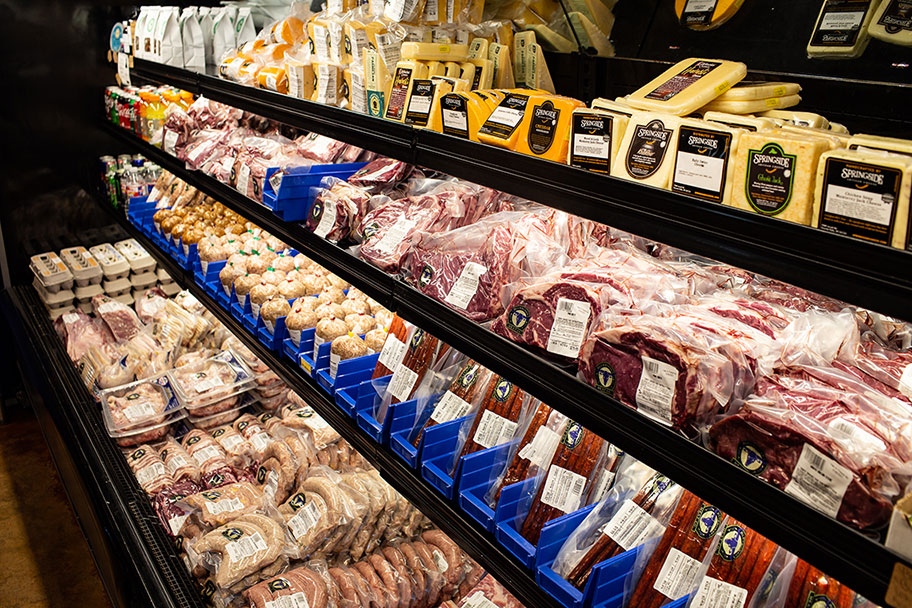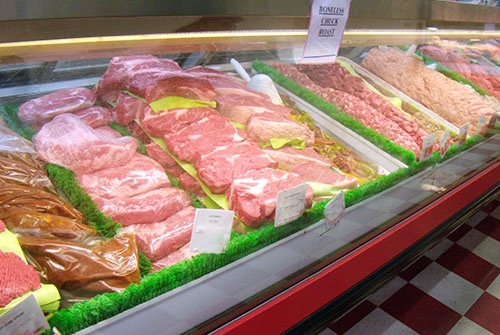Bagley Farms Meat Market Edwardsville IL: Your Best Destination for Neighborhood Meat Choice
Bagley Farms Meat Market Edwardsville IL: Your Best Destination for Neighborhood Meat Choice
Blog Article
Reveal the Art of the Butcher's Cut in a Modern Meat Market
In the ever-evolving landscape of modern meat markets, the butcher's cut has actually transcended its conventional origins, merging olden workmanship with modern practices. What absolutely sets the contemporary butcher apart is their capability to forge a much deeper link in between customers and the origins of their meat.
Advancement of Butchery Techniques
The evolution of butchery methods mirrors an abundant tapestry of development and adjustment driven by advancements in innovation, modifications in consumer demand, and a deeper understanding of meat science. Historically, butchery was a craft gave through generations, with approaches developed over centuries to make best use of yield and taste. Nonetheless, the commercial transformation introduced mechanization, changing standard techniques and making it possible for massive handling.
The mid-20th century saw butchery methods better fine-tuned by scientific insights right into muscle mass biology and meat aging, enhancing both inflammation and preference. Advancements like vacuum packaging and refrigeration extended item shelf-life, permitting butchers to diversify offerings and enhance quality assurance. This period also marked the rise of customized equipment, such as band saws and meat slicers, which enhanced accuracy and effectiveness in meat processing.

Computerized systems currently aid in monitoring animal provenance and maximizing cuts to fulfill details client preferences. Additionally, a rebirth in artisanal butchery has emerged, mixing traditional skills with modern-day knowledge to cater to consumers seeking ethical and sustainable meat options.
Understanding Meat Cuts
Understanding the ins and outs of meat cuts is crucial for both butchers and customers seeking top quality and worth. For butchers, exact cuts reflect skill and respect for the craft, guaranteeing very little waste and optimum yield.

Recognizing muscle structure is crucial; muscular tissues used a lot more regularly by the pet tend to be tougher and are best suited for slow-moving food preparation methods, while less-used muscular tissues, like those found in the loin, are much more tender and ideal for grilling or roasting. Experience with these distinctions equips customers to make enlightened options, enhancing their culinary undertakings.
Choosing Top Quality Meat
Selecting the best meat entails even more than just choosing an aesthetically attractive item from the display screen. The art of picking quality meat requires a discerning eye and knowledge of specific features that indicate freshness and quality.
Secondly, consider the marbling, which describes the white streaks of fat within the muscle mass. Correct marbling is a crucial indication of tenderness and taste, as it thaws throughout food preparation, improving the meat's juiciness. Keep in mind, higher marbling usually associates with premium quality cuts, such as USDA Prime.
Appearance is another crucial aspect; meat must really feel strong to the touch, not slimed or overly soft. In addition, be mindful of the fragrance. Fresh meat must have a tidy, neutral smell, devoid of any type of sour or off-putting smells.
Pairing Cuts With Cooking Methods

Alternatively, tougher cuts like like it brisket and chuck roast are abundant in collagen, which damages down into gelatin when cooked slowly. These cuts are optimal for braising or slow-moving roasting, enabling the meat to soften with time and develop deep, complicated tastes. In a similar way, cuts such as brief ribs and pork shoulder prosper with slow-cooking techniques, where prolonged cooking times change their robust structures into succulent meals.
Lamb shanks and oxtail, which call for prolonged food preparation to tenderize, are excellent candidates for cooking or slow-moving simmering. These approaches coax out rich, hearty tastes while preserving dampness. By recognizing the distinct features of each cut, cooks and home chefs alike can raise their cooking developments, ensuring each dish is both satisfying and memorable.
The Butcher's Function Today
Browsing the advancing landscape of the contemporary meat market, the butcher's role today prolongs beyond simple prep work of cuts. Contemporary butchers are cooking craftsmens, instructors, and supporters for lasting methods. They bridge the gap between the ranch and the fork by ensuring ethical sourcing, recognizing animal husbandry, and focusing on transparency in the supply chain. This shift mirrors the expanding customer need for top quality over amount, where i thought about this provenance and pet welfare are vital.
Along with crafting specific cuts, butchers currently involve straight with clients, providing cooking guidance and customizing options to match specific needs and preferences. Their experience in meat aging, marbling, and flavor accounts encourages consumers to make informed decisions, boosting their cooking experiences. This individualized service exemplifies the butcher's developing duty as a trusted expert in the kitchen area.
Additionally, butchers are critical in lessening waste, using entire animals to create varied items such as sausages and stocks. This comprehensive technique not only values the pet however additionally lines up with contemporary sustainability objectives. In this means, the modern butcher personifies both tradition and development, adapting to an ever-changing market while preserving the virtuosity and stability of their craft.
Conclusion
The modern butcher's craft elaborately weaves traditional techniques with Visit Website modern innovations, stressing sustainable techniques and honest sourcing. Mastery in understanding diverse meat cuts and quality indications empowers butchers to supply enlightened suggestions, straightening details cuts with optimum food preparation methods. This expertise not just elevates culinary experiences however likewise reinforces the connection between consumers and the beginnings of their food. By recognizing historic methods while welcoming contemporary demands, the butcher's function stays vital in today's sophisticated meat market (bagley farms meat market edwardsville il).
Report this page